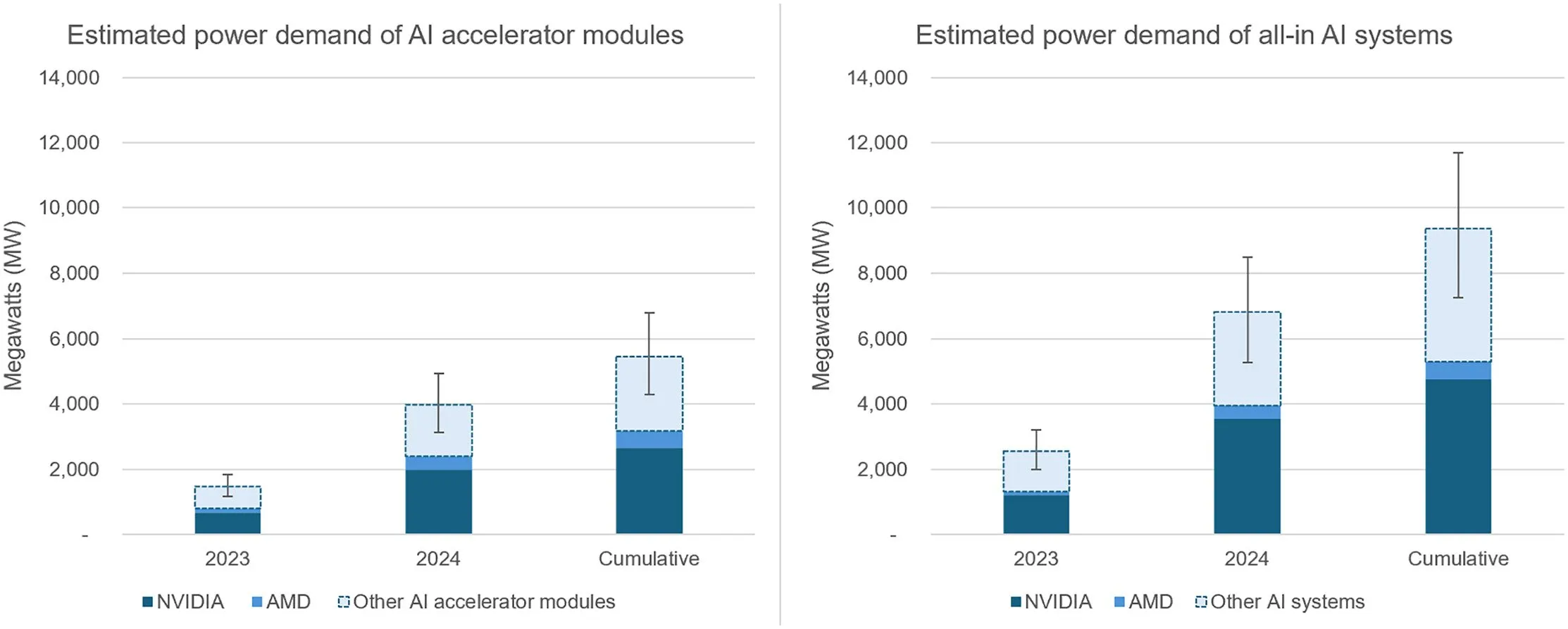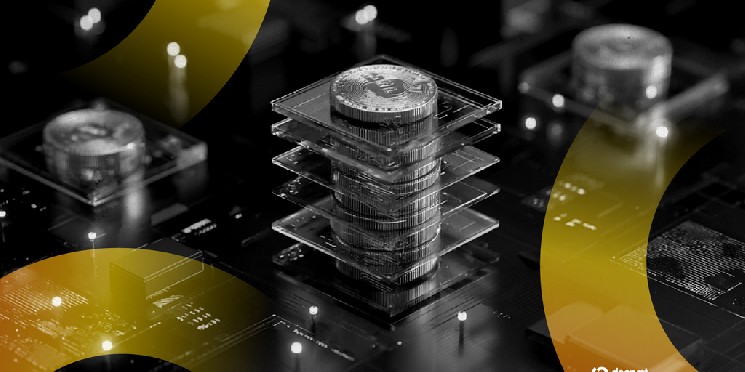Bear in mind when Bitcoin crashed after Tesla tweeted that Tesla would cease accepting it as a result of environmental issues, everybody was apprehensive in regards to the environmental influence of mining proof of labor? It was 2021, however Degens didn't overlook.
However at the moment, Musk's Xai is constructing what could possibly be the world's largest AI supercluster, and the federal government is speeding to create legal guidelines to spice up AI innovation.
New peer-reviewed analysis paper printed in Scientific Journal Jules Synthetic intelligence has revealed that by the top of 2025, it may well account for as much as 49% of worldwide information middle energy utilization.
Vrije Universiteit Amsterdam and longtime Bitcoin Power Consumption Critics PhD candidate Alex De Vries-Gao have found that AI's electrical energy demand might attain 23 gigawatts by January 1st. Bitcoin presently consumes roughly 176 TWH per yr.

Picture: Jules
“We're very conscious of this pattern as corporations like Google even point out that they've confronted a 'energy capability disaster' of their efforts to broaden their information middle capabilities,” De Vries-Gao wrote on LinkedIn. “On the similar time, these corporations don't like to speak in regards to the numbers concerned.”
“I've by no means seen something like this once more since ChatGpt launched AI hype,” he added. “In consequence, it stays nearly unattainable to achieve good perception into the precise power consumption of AI.”
Not like Bitcoin's clear power consumption, which anybody can calculate from the community hashrate, AI's energy starvation is deliberately opaque. Corporations similar to Microsoft and Google reported elevated electrical energy consumption and carbon emissions of their 2024 Environmental Report, cited AI as a significant driver of this progress. Nonetheless, these corporations supply information middle metrics in complete, with out particularly breaking AI consumption.
The tech large refused to reveal AI-specific power information, so De Vries-Gao adopted the chip. He tracked the chip packaging capability of Taiwanese semiconductor producers as nearly each superior AI chip requires the know-how.
De Vries-Gao defined that arithmetic works like an analogy for enterprise playing cards. If you understand how many playing cards match within the sheet and what number of sheets the printer can deal with, you’ll be able to calculate the entire manufacturing. De Vries-Gao utilized this logic to semiconductors, analysing income calls that TSMC executives acknowledged “very strict capabilities” and “can’t meet 100% of what prospects want.”
His findings: Nvidia alone used an estimated 44% and 48% of TSMC's Cowos capability in 2023 and 2024. As AMD is taking one other slice, these two corporations had been capable of produce sufficient AI chips to eat 3.8 GW of electrical energy earlier than contemplating different producers.

Picture: Jules
De Vries-Gao's forecasts had been to count on AI to hit 23 Golden Week by the top of 2025, and manufacturing wouldn’t enhance. TSMC has already confirmed plans to double the Cowos capability once more in 2025.
There’s little likelihood that electrical energy demand will decelerate. Nvidia and AMD introduced file income, whereas Openai introduced Stargate, a $500 billion information middle enterprise. The truth is, AI is essentially the most worthwhile enterprise within the tech business, with all three of the world's high 3 high-tech corporations exceeding the market capitalization of your entire $3.4 trillion crypto ecosystem.
So the atmosphere will most likely have to attend.


